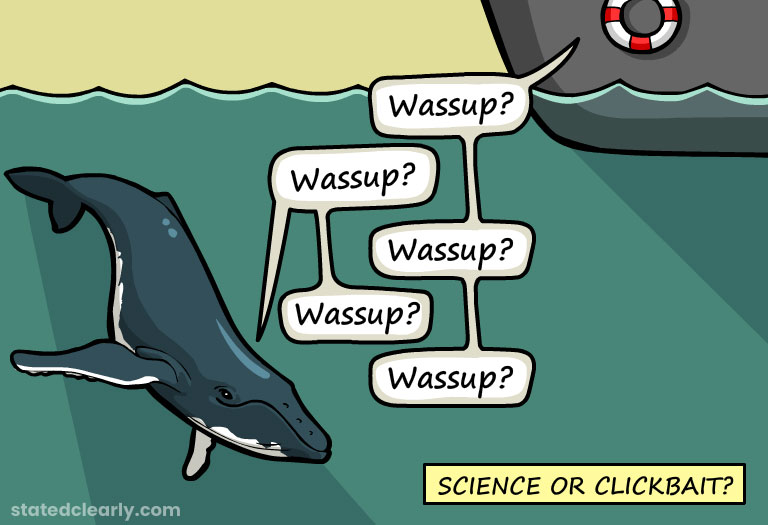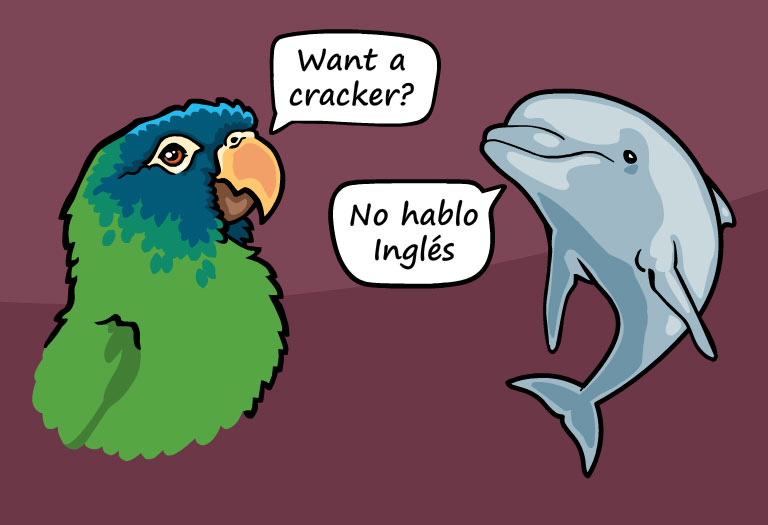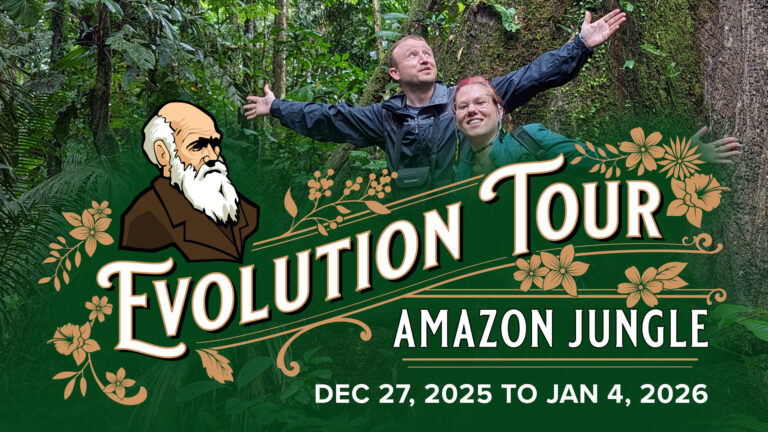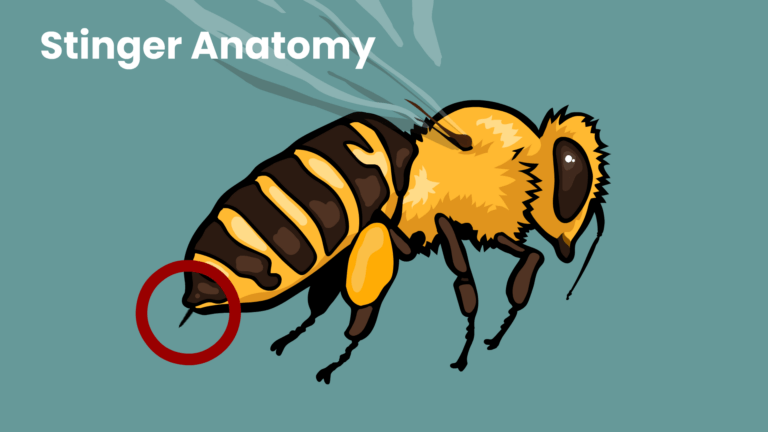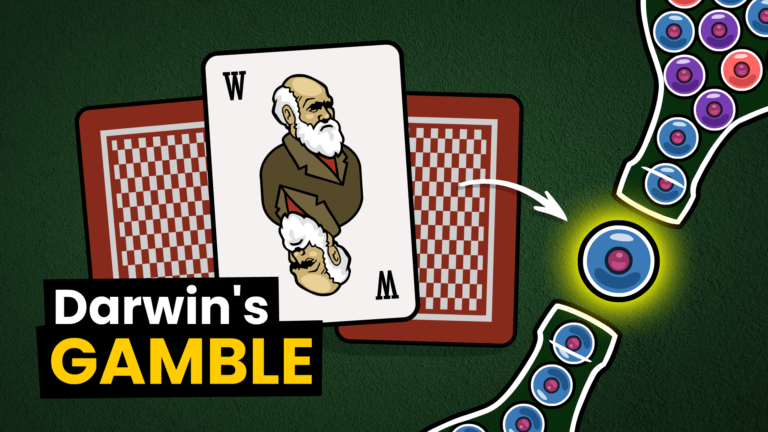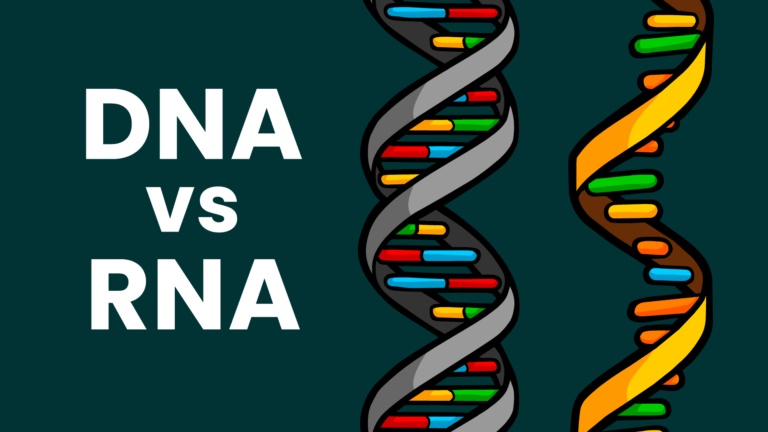Recently, there’s been lots of mainstream media reporting over a research article published in the biological and medical science journal PeerJ, claiming scientists had a “conversation” with a humpback whale, using the whale’s own “language.” Now, journalists can sometimes misunderstand and even exaggerate scientific findings, but in this case the researchers themselves used words like “conversing” and “meaning” in their paper describing the interaction, suggesting (whether they intended to or not) that whales posses a human-like language of their own. Have these scientists and journalists misled the public about the nature of animal communication?
As a linguist, I’d say most definitely! To see why, we need to talk about what the scientists actually did, what the general public thinks a conversation really is, and why linguists find human communication to be so unique in the biological world.
What the scientists actually did
Over the course of about 20 minutes, in the waters near Southeast Alaska, a team of scientists broadcast recordings they recently made of humpback whale contact calls in the area. Contact calls are a bit like the humpback whale version of the call-and-response game Marco Polo, but with the goal of maintaining group cohesion over short and medium distances, instead of just for fun. In response, a whale the scientists named Twain (whose own calls may have been part of the recordings) produced contact calls of her own, which were closely timed to the scientists’ playback, and so engaged in turn-taking — an advanced skill which forms a crucial component of linguistic communication. Contact calls this sophisticated are, without doubt, a demonstration of social intelligence, but did this humpback whale have a real conversation with the researchers?
Reports on the experiment have treated turn-taking as being enough to call the interaction a conversation. But this could be misleading. Consider that hunters often make contact calls to ducks. Those ducks often respond by coming closer and even making contact calls of their own. Have the hunters conversed with the ducks? Should the Duck Dynasty guy win the next Templeton Prize? I don’t think so, and I bet you agree!
So what really is a conversation?
Words don’t have single, capital T “True” definitions. Instead, words are evolvable tools for communication. Words can be defined and redefined as much as one likes, so long as the sender and receiver both agree on what definition is being used. But when scientists and reporters take a common word with a well-understood meaning — “conversation,” in this case — it’s confusing to suddenly use that word in a new way without warning. Jon Perry, the founder of Stated Clearly, recently posted a Twitter poll to see what his audience thinks it would mean to converse with a whale. As you might guess, most people intuit that a conversation is more than the exchange of mere contact calls.
Linguists define “conversation” in a way similar to how the larger public generally uses the word. As a first pass, we can define a conversation as a coordinated and cooperative exchange of linguistic expressions between 2 or more individuals, either spoken or signed or written. To fully appreciate what goes into a conversation, though, we need to consider what those expressions are. In brief, we speak in sentences, which express meaningful ideas about the world. These ideas, which we’ll call propositions, are the sorts of things that are either true or false; either they accurately describe the world, or they don’t. And these propositions, and the sentences we use to express them, can be very complex. Consider the following sentence, traditionally labelled a counterfactual.
“If he had been as smart as he was certain, we wouldn’t be in this mess.”
At a high level, this sentence asks us to consider an event that didn’t occur, in contrast to another that did, and to imagine a hypothetical chain of cause and effect, with history playing out differently. It also includes temporal information (tense and aspect), expressions that can only be decoded in context (“he,” “we,” and “this mess”), and a comparison of abstract quantities (intelligence vs. certainty) — not to mention a spatial metaphor involving “in.” And all this only scratches the surface.
This sentence, which is built out of many subparts, has lots of meaning packed into it. And linguists have argued there’s no upper bound to what we can communicate: whatever can be meant, can be said.
Now a full conversation, from the point of view of a linguist, involves each person contributing multiple propositions, in order to build up a common ground — the collective pool of information we can agree is true, at least in the moment. A conversation’s purpose is to add to this set of beliefs — not the sum total of all our beliefs, or even all the beliefs we happen to share, but the beliefs we want to make sure are shared. Fundamentally, a conversation expands what we know about each other. The two of us might already agree the above sentence is true without realizing it, but by speaking it aloud, we enter it into the record, so each of us now knows each of us believes it. The proposition is in the common ground.
Contact
So, was this the kind of activity the researchers engaged in? Well, no. What happened was a bit more like playing a recording of your pet back to itself, eliciting a reaction (try playing a YouTube video of cats meowing to your own cat, for instance). At best, a single expression, whose meaning we don’t fully understand, and which may not even have meaning the same way words do, was repeated over and over again. It may be that humpback whale calls express propositions as sophisticated as our own — the same might turn out to be true of a dog’s barks — but we just don’t have enough evidence to draw that conclusion. We can’t even be sure Twain wasn’t just responding to the novelty of hearing her own voice.
If we wanted to establish that humpback whales have true language, there are lots of things we’d have to look for first. In my article discussing the distinctive features of human language, I mentioned there are dozens of traits you’d need to discover, before supposing whales have anything like what we have. One example would be Semanticity, the idea that expressions can be used to meaningfully refer to objects, events, properties, or concepts. And even then, it would take a practiced linguist, trained in the methods of monolingual fieldwork (a collaborative process where no shared language exists), to get to a point where we’re able to exchange even simple ideas reliably.
This doesn’t mean the interaction wasn’t interesting in its own right, and it’s entirely possible that future research really will allow full conversations between species! But we haven’t seen that yet.
Language and technology
It’s possible we’ll find truly language-like behavior in non-human animals, as we conduct more careful and controlled experiments. We also have to be open to the possibility that the way we talk to each other is singular on this planet, which is an idea that shouldn’t be too surprising, if we think about the global span of our civilization. We know humans have produced technology that goes far beyond what we’ve seen in other species. And we have reason to believe that one important factor in developing more advanced technology is a shared system that allows for the dependable transmission of multipart ideas. That doesn’t mean it’s the only ingredient, and it doesn’t guarantee that no civilization means no language; after all, our own linguistic abilities preceded modern social organization by tens or hundreds of thousands of years — maybe even millions. But the fact that we’ve seen no other examples of human-like technology becomes much less surprising if full-fledged language has only shown up once.
Finally, some common ground
Scientists successfully interacted with a humpback whale, in a way that demonstrates a level of social intelligence worthy of study, but a lot’s left for future research. The casual descriptions mentioning conversation and language, by researchers and reporters alike, can give the mistaken impression that we’ve made more progress than we actually have. The ingredients of a real conversation are many, and it will take a lot more work to determine whether they’re all there in whales.
In the meantime, we should applaud the careful work, and the responsible reporting, that properly addresses these big questions. And we should stay skeptical over any claims of big leaps that skip the important steps towards a truly complete picture — a picture that’s often much, much bigger than we realize.
